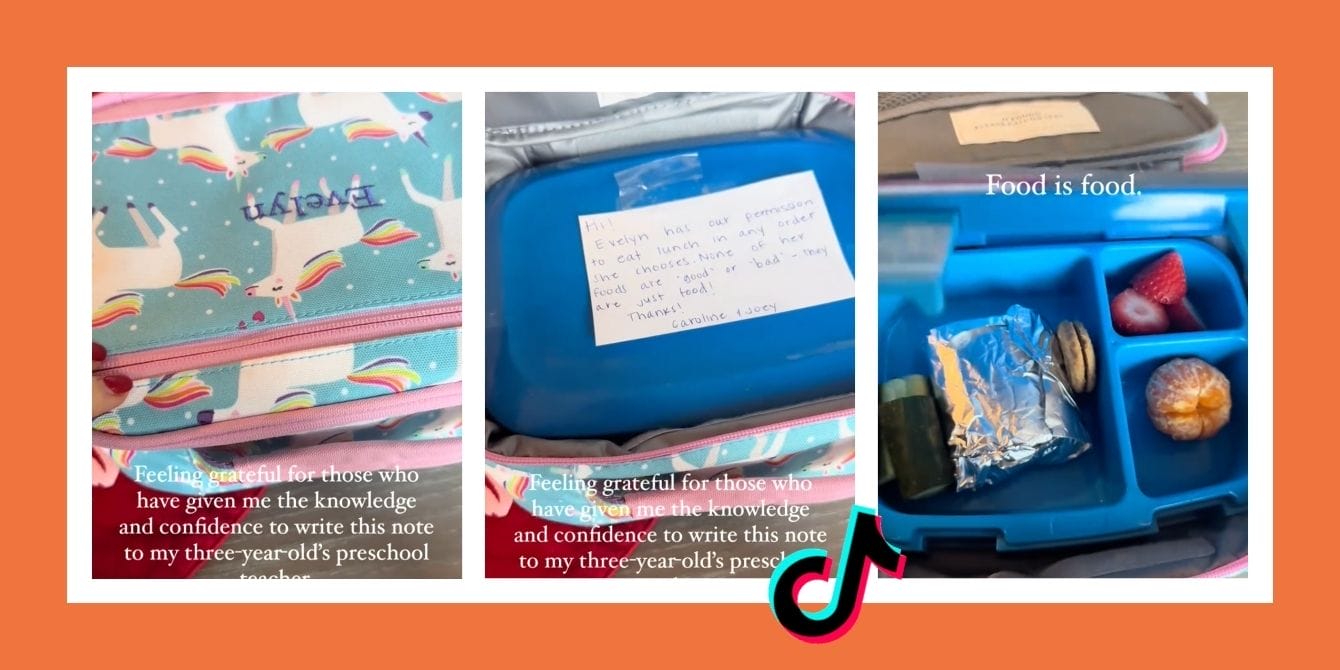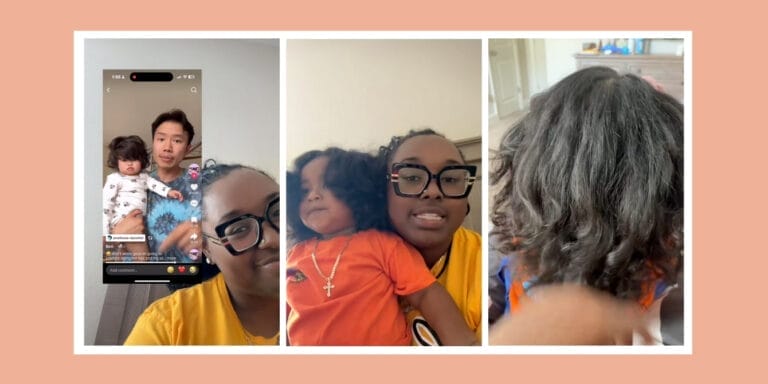Mom sends angry note in daughter’s lunch after teacher comments on ‘good’ and ‘bad’ foods

pezzi.shop/TikTok
Telling a 3-year-old to eat "good" foods before "bad" foods is not the move.
Lunch notes are a very popular thing to send in with your kids to school, but there are many different reasons you may want to communicate via lunch notes. Another story of a mom who has had it with a teacher criticizing her young child’s lunch. A mom named Caroline, who posts on social media under the name @pezzi.shop, posted a video about what she did after her 3-year-old daughter came home complaining that her teacher said she needed to eat her “good” foods before her “bad” foods at lunch.
“In this moment, I felt a little frustrated by the antiquated instruction from the teacher, but I responded saying, ‘Well that’s silly. There are no good foods or bad foods. Food is just food,'” Caroline said in the video, which has gone viral. She then showed her handwritten note to the teacher, which included this sound and true statement: “None of her foods are ‘good’ or ‘bad’—they are just food!”
Can we all just collectively agree that if you work at a school or daycare, it’s not your place to criticize what a parent sends in their own child’s lunchbox from home? For one thing, you don’t know all the context and details about that child’s family situation and dietary needs — their family may live in a food desert where they don’t have consistent access to fresh produce, they may rely on food banks and not have a lot of choice in the foods they get access to from week-to-week, or the child may be extra picky, in which case medical professionals agree that getting them to eat the calories they’ll consume is better than them not eating at all (and is unlikely to negatively impact their health or growth in the long run).
Even though Caroline was obviously in the right, and no one should be teaching a 3-year-old to assign moral values to foods, the comments section was split on this.
“I’m sure the teacher wasn’t trying to be cruel … maybe you could have talked to the teacher instead of a passive-aggressive note on your three-year-old’s lunch,” one commenter wrote.
But another took Caroline’s side and wrote, “As a teacher, your response is 100% right. The narrative of ‘good’ and ‘bad’ food can actually encourage harmful eating habits to develop.”
In her video, Caroline added some more context, explaining that when she was growing up, she was taught that some foods are “good” and others are “bad,” and ultimately, it harmed her relationship with food and eating. Now that she’s learned better, she said, she wants to pass on a healthier view to her daughter. And that’s an admirable position to take.





































